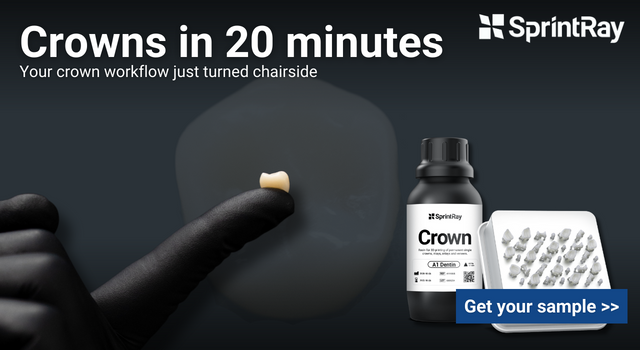
The amount of uses 3D printers are finding in dentistry is ever-increasing, and already an extremely long list. Here are just some of the highlights:
What makes a good 3D printer largely depends on what you want the printer to achieve. What types of solutions are you looking to provide by adding a 3D printer to your practice? Areas to consider are:
3D printing clearly has a major role to play in the future of dentistry, so don’t get left behind; browse our range of 3D printers now and find the right one for your practice.
3D printing, or additive manufacturing, can be a great way of producing prototypes, models, and treatment devices that need to be tailored to a patient’s individual needs. The different types of 3D printing, detailed below, all have different highlights and drawbacks around cost, precision, material, durability, and speed.
3D printing in dentistry is not a situation where one size fits all, so you need to work out what is best for your dental practice. Are you a small practice looking to be able to create bespoke and individual solutions for your patients? Or are you a large practice with multiple surgeries and the scope for a high level of printing? Whatever your needs, you need to seek out the right solution for you.
No 3D printer has just one use, no matter which model you decide is best for you, they are all multi-purpose tools that can be used to create a variety of dental products to help in your practice.
There are four primary types of 3D printers in use: Stereolithography (SLA, SL), Material / Photopolymer Jetting (PPJ), Powder Binder Printers (PBP), and Digital Light Processing (DLP).
Stereolithography is the most common type of 3D printer and also recognised for its accuracy and finish. The process uses light-cured photopolymer resin and a laser beam to build models in the print area layer by layer. In dentistry it is ideal for prototyping and producing accurate and detailed parts, tailored to individual patient needs.
Material/Photopolymer Jetting is a method where liquid photoreactive material is deposited layer by layer into a build platform and immediately solidified by UV curing lights. There are usually two different material types – one for the build and one for the structure to support the build during printing – which work alongside each other to produce an extremely smooth and high-quality model. PPJ 3D printing is particularly expensive due to the size of the printers and cost of printing materials.
Unlike the PPJ system, Power Binder Printers require no support material as prints are built in a ‘powder bed’. It works by lowering the powder bed incrementally while an inkjet print-head deposits liquid binder. PBP typically allows for less accuracy and precision in prints, but whilst it may not be useful for creating parts for patient use, they can be useful for printing useful models and visual tools for patients and dental colleagues.
The fourth option, Digital Light Processing, is similar to SLA, except that it uses a projected light source instead of a laser, and cures entire layers at once. Benefits of these printers is that they have easy digital workflows, choices for materials used, and a small footprint; however they are expensive, especially when compared to SLAs, and struggle to have such a clean finish.
Got a question you can't find an answer for? Pop it in the box below and we'll get back to you as soon as possible.
Henry Schein UK Holdings Limited t/a Henry Schein Dental is a limited company registered in England and Wales under registration number 11584480 and VAT registration number 573778979. Its registered office is Medcare House, Centurion Close, Gillingham Business Park, Gillingham, Kent, ME8 0SB.
Henry Schein UK Holdings Limited is authorised and regulated by the Financial Conduct Authority and is entered on the Financial Services Register under firm reference number 708571. Henry Schein UK Holdings Limited is a credit broker and not a lender.